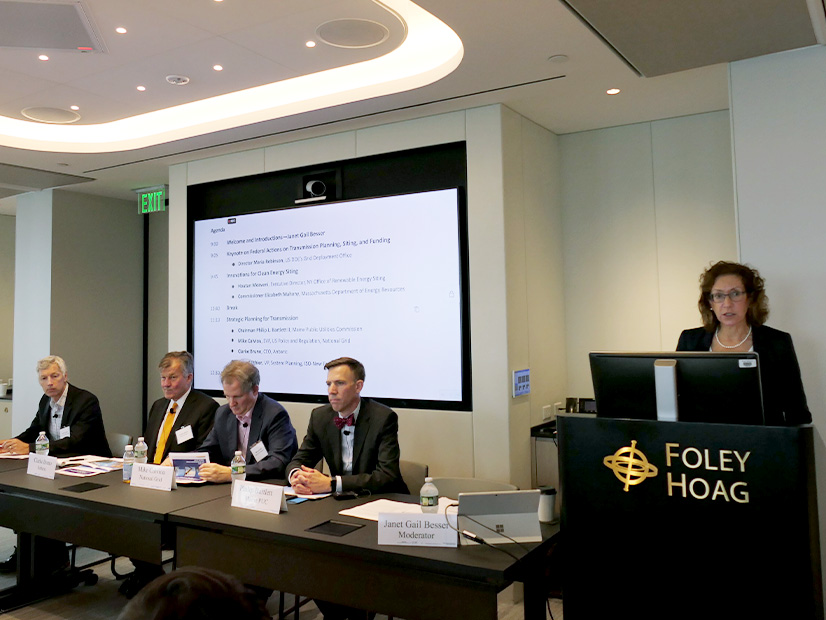Northeast Stakeholders Push Transmission Planning, Siting Reform

From left: Robert Ethier, ISO-NE; Clarke Bruno, Anbaric; Mike Calviou, National Grid; Maine PUC Chair Philip Bartlett; and Moderator Janet Gail Besser | © RTO Insider LLC
Oct 3, 2023
|
Speakers at Raab Associates’ New England Electricity Restructuring Roundtable emphasized the importance of transmission planning to ensure the grid can handle increased amounts of variable clean energy and higher demand from electrification.


